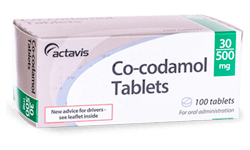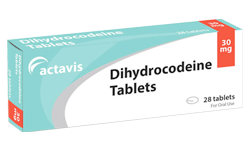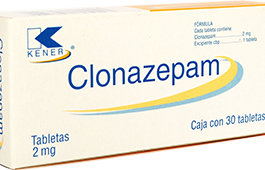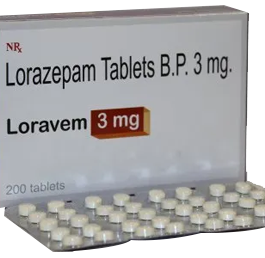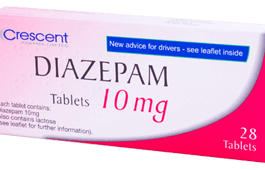





Discover Our
Best Selling
-
- Opiods
Onax Alprazolam
- £350.00 – £850.00
- Select options This product has multiple variants. The options may be chosen on the product page
-
- Opiods
Vicodin
- £250.00 – £899.00
- Select options This product has multiple variants. The options may be chosen on the product page
-
- Opiods
Valium (Diazepam)
- £350.00 – £650.00
- Select options This product has multiple variants. The options may be chosen on the product page
-
- Opiods
Oxycodone Hydrochloride Tablets
- £350.00 – £650.00
- Select options This product has multiple variants. The options may be chosen on the product page
-
- Opiods
Adderall IR / XR
- £250.00 – £899.00
- Select options This product has multiple variants. The options may be chosen on the product page
-
- Opiods
Codeine Phosphate
- £300.00 – £520.00
- Select options This product has multiple variants. The options may be chosen on the product page
-
- Opiods
Promethazine Hydrochloride & Codeine Phosphate Solution
- £340.00 – £600.00
- Select options This product has multiple variants. The options may be chosen on the product page
-
- Opiods
Methadone Hydrochloride
- £340.00 – £820.00
- Select options This product has multiple variants. The options may be chosen on the product page
-
- Opiods
Percocet Pills
- £350.00 – £620.00
- Select options This product has multiple variants. The options may be chosen on the product page
-
- Painkillers
Co-codamol Tablets
- £145.00 – £225.28
- Select options This product has multiple variants. The options may be chosen on the product page
-
- Painkillers
Dihydrocodeine Tablets
- £217.00 – £350.28
- Select options This product has multiple variants. The options may be chosen on the product page
-
- Painkillers
Carisoprodol Tablets
- £149.00 – £245.00
- Select options This product has multiple variants. The options may be chosen on the product page
-
- Anxiety Pills
Etizolam
- £142.00 – £199.67
- Select options This product has multiple variants. The options may be chosen on the product page
-
- Anxiety Pills
Clonazepam
- £137.00 – £200.00
- Select options This product has multiple variants. The options may be chosen on the product page
-
- Anxiety Pills
Lorazepam Tablets
- £137.00 – £197.28
- Select options This product has multiple variants. The options may be chosen on the product page
-
- Anxiety Pills
Diazepam 10mg
- £142.00 – £197.28
- Select options This product has multiple variants. The options may be chosen on the product page

Sleeping Pills
Insomnia And Sleep Problems The Same?
Occasional bouts of sleeping difficulties are common among most adults and a brief period of sleeplessness generally resolves on its own without treatment. However, for about one third of the adult population, getting a full night’s sleep happens rarely and this unhealthy routine generally requires treatment. Sleeping difficulties can last months, or even years and involve the following symptoms:
- Taking an unusually long time to fall asleep
- Waking up often during the night
- Waking up too early with difficulty resuming sleep
- Waking up tired and drowsy in the morning
- Excessive sleepiness during the day
How Do Painkillers Works?
Painkillers, also known as analgesics, work by targeting the body’s pain receptors and pathways to reduce or alleviate pain. The specific mechanisms of action can vary depending on the type of painkiller. Here are some common ways in which painkillers work:
- Nonsteroidal Anti-Inflammatory Drugs (NSAIDs): NSAIDs, such as ibuprofen or naproxen, work by inhibiting the production of prostaglandins, which are substances that contribute to inflammation and pain. By reducing inflammation, NSAIDs can help relieve pain associated with conditions like arthritis, injuries, or menstrual cramps.
- Opioids: Opioids, such as morphine, codeine, or oxycodone, work by binding to opioid receptors in the body, primarily in the brain and spinal cord. By doing so, they can block pain signals and provide pain relief. Opioids are often used for moderate to severe pain but carry a higher risk of dependency and side effects.
- Acetaminophen: Acetaminophen, such as Tylenol, is thought to work by inhibiting certain enzymes in the brain that are involved in pain perception and fever. It is commonly used for mild to moderate pain and does not possess strong anti-inflammatory properties like NSAIDs.
- Topical Analgesics: Topical pain relievers, such as creams, gels, or patches, are applied directly to the skin over the painful area. They work by numbing the area, reducing inflammation, or altering nerve function to alleviate pain.
- COX-2 Inhibitors: COX-2 inhibitors are a specific class of NSAIDs that selectively target the enzyme COX-2, which is involved in inflammation and pain. By inhibiting COX-2, these medications help reduce pain and inflammation while potentially minimizing some of the gastrointestinal side effects associated with traditional NSAIDs.
It’s important to note that painkillers provide temporary relief rather than treating the underlying cause of the pain. They should be used as directed by healthcare professionals and for the recommended duration. It’s always advisable to consult with a healthcare provider to determine the most appropriate painkiller for your specific condition and to discuss any potential side effects or interactions with other medications.
When to Use Painkillers

What Are the Best Painkillers?
Determining the “best” painkiller depends on various factors, including the type and severity of pain, individual health conditions, and personal response to medications. It’s important to consult with a healthcare professional for personalized recommendations. However, here are some commonly used painkillers that are known to be effective:
- Nonsteroidal Anti-Inflammatory Drugs (NSAIDs): NSAIDs like ibuprofen, naproxen, and aspirin are widely used for relieving pain associated with inflammation, such as muscle aches, headaches, and menstrual cramps.
- Acetaminophen (Tylenol): Acetaminophen is commonly used for mild to moderate pain relief and is effective for reducing fever. It is often recommended for individuals who cannot take NSAIDs due to specific health conditions or medication interactions.
- Opioids: Opioids, such as codeine, morphine, oxycodone, and hydrocodone, are potent pain relievers used for moderate to severe pain. These medications are typically prescribed for short-term use or in specific medical situations, as they carry a higher risk of side effects and dependency.
- Topical Analgesics: Topical pain relievers such as creams, gels, or patches can be effective for localized pain relief, such as muscle or joint pain. These products often contain ingredients like lidocaine, capsaicin, or menthol.
What Do Nootropics Treat?

Nootropic Drugs: Exploring Cognitive Enhancement
Nootropic drugs, also known as cognitive enhancers or smart drugs, are pharmaceutical substances designed to enhance cognitive functions such as memory, focus, and mental agility. These drugs, which include medications like modafinil, methylphenidate, and piracetam, have garnered attention for their potential to boost brain performance.
Nootropic drugs work by targeting neurotransmitters, receptors, or other pathways in the brain to enhance cognitive processes. They are often prescribed for medical conditions like attention deficit hyperactivity disorder (ADHD), narcolepsy, or cognitive impairment.
While nootropic drugs can provide short-term cognitive benefits, it is essential to approach them with caution. These drugs may have side effects, interact with other medications, or carry the risk of dependency. Therefore, their use should be supervised by healthcare professionals and strictly adhere to prescribed dosages.

Subscribe today
Get 10% OFF Discount code!
What are Opiods?
Opioids are a class of medications that are derived from or chemically similar to opium, which is derived from the poppy plant. Opioids are potent pain-relieving substances that work by binding to opioid receptors in the brain, spinal cord, and other parts of the body. They are primarily used for the management of moderate to severe pain, but they can also have other effects on the central nervous system.
Here are some key points about opioids:
- 1. Pain Relief: Opioids are highly effective in relieving pain by binding to opioid receptors and reducing the transmission of pain signals. They can be used for various types of pain, such as postoperative pain, cancer-related pain, or pain associated with acute injuries.
- Opioid Receptors: Opioid receptors are found in the brain, spinal cord, and peripheral nervous system. When opioids bind to these receptors, they can produce analgesia (pain relief), sedation, and a sense of euphoria.
- Side Effects: Opioids can have several side effects, including drowsiness, dizziness, nausea, constipation, slowed breathing, and potential for dependence or addiction. These side effects can vary depending on the specific opioid used, the dose, and individual factors.
- Types of Opioids: There are various types of opioids, including natural opioids derived from opium, such as morphine and codeine, as well as synthetic opioids, such as oxycodone, hydrocodone, fentanyl, and tramadol. Each opioid has different potency, duration of action, and potential for side effects.
- Prescription and Illicit Use:
- Opioid Crisis: seek medical guidance when using these medications.











